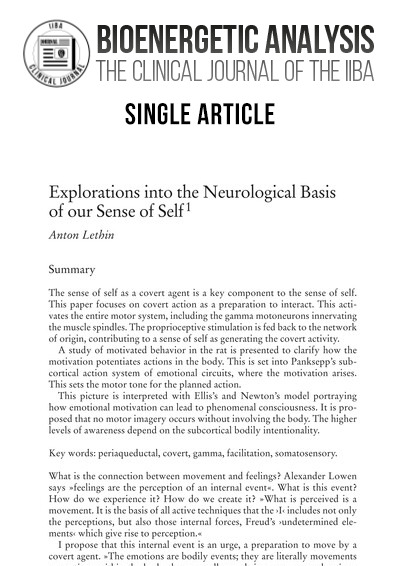Explorations into the Neurological Basis of our Sense of Self
DOI:
https://doi.org/10.30820/0743-4804-2006-16-129Schlagworte:
periaqueductal, covert, gamma, facilitation, somatosensoryAbstract
The sense of self as a covert agent is a key component to the sense of self. This paper focuses on covert action as a preparation to interact. This activates the entire motor system, including the gamma motoneurons innervating the muscle spindles. The proprioceptive stimulation is fed back to the network of origin, contributing to a sense of self as generating the covert activity. A study of motivated behavior in the rat is presented to clarify how the motivation potentiates actions in the body. This is set into Panksepp’s subcortical action system of emotional circuits, where the motivation arises. This sets the motor tone for the planned action. This picture is interpreted with Ellis’s and Newton’s model portraying how emotional motivation can lead to phenomenal consciousness. It is proposed that no motor imagery occurs without involving the body. The higher levels of awareness depend on the subcortical bodily intentionality.
Downloads
Zitationsvorschlag
Lethin, A. (2022). Explorations into the Neurological Basis of our Sense of Self. Bioenergetic Analysis, 16(1), 129–153. https://doi.org/10.30820/0743-4804-2006-16-129
Ausgabe
Rubrik
Articles
Lizenz

Dieses Werk steht unter der Lizenz Creative Commons Namensnennung - Nicht-kommerziell - Keine Bearbeitungen 4.0 International.
This work is licensed under the Creative Commons Attribution-NonCommercial-NoDerivatives 4.0 International License (CC BY-NC-ND 4.0). This license allows private use and unmodified distribution, but prohibits editing and commercial use (further information can be found at: https://creativecommons.org/licenses/by-nc-nd/4.0/). The terms of the Creative Commons licence only apply to the original material. The reuse of material from other sources (marked with a reference) such as charts, illustrations, photos and text extracts may require further permission for use from the respective copyrights holder.


